Abstract
Several screening policies have been recommended for implementation in England and Wales in the last 20 years, although no evidence as to their relative effectiveness or efficiency has been provided. Using a computer simulation model, the outcomes expected from those policies had they been implemented over a 30 year period (1961-90) have been examined. The original policies based on five-yearly testing of women aged over 35 appear to be the most cost-effective, and extension of screening to younger age groups leads to loss of efficiency. Attempts to use non-screening health care contacts in order to take cervical smears (eg, during pregnancy, family planning, at gynaecology clinics) produce few advantages and considerably complicate the establishment of regular testing for the individual. The achievement of higher attendance rates is as important to the outcome of screening as concentration on more intensive or complex policies.
Full text
PDF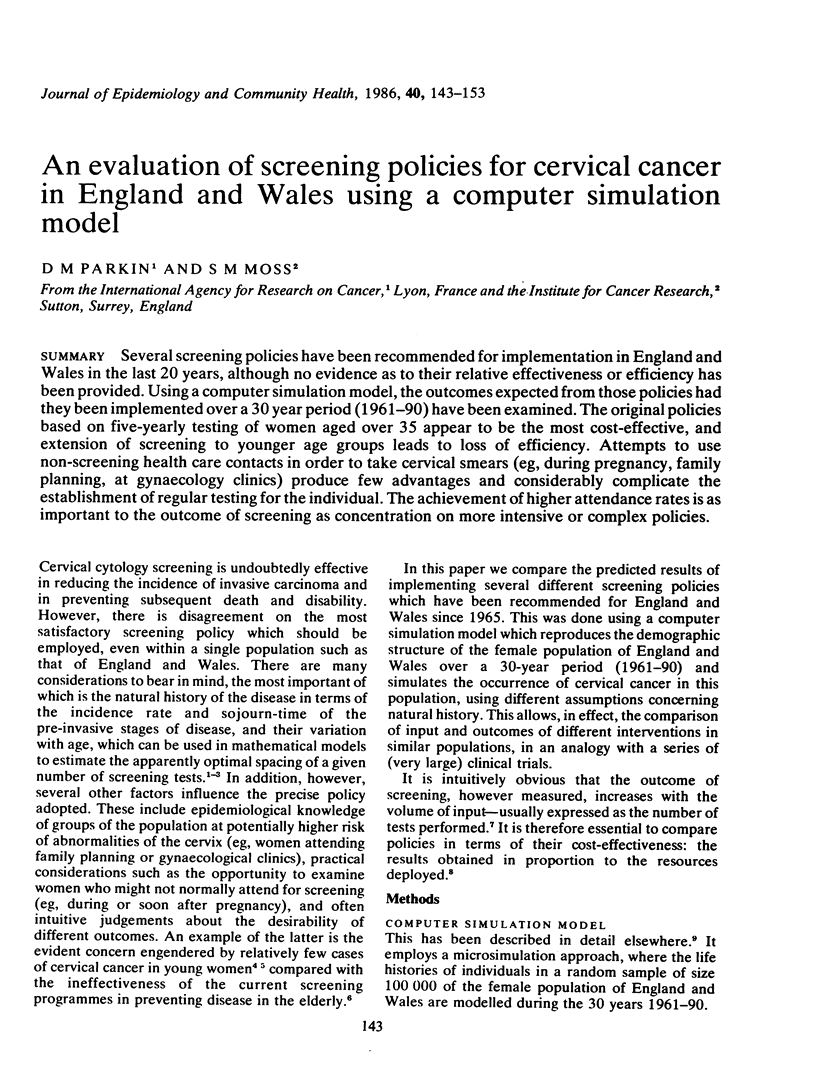
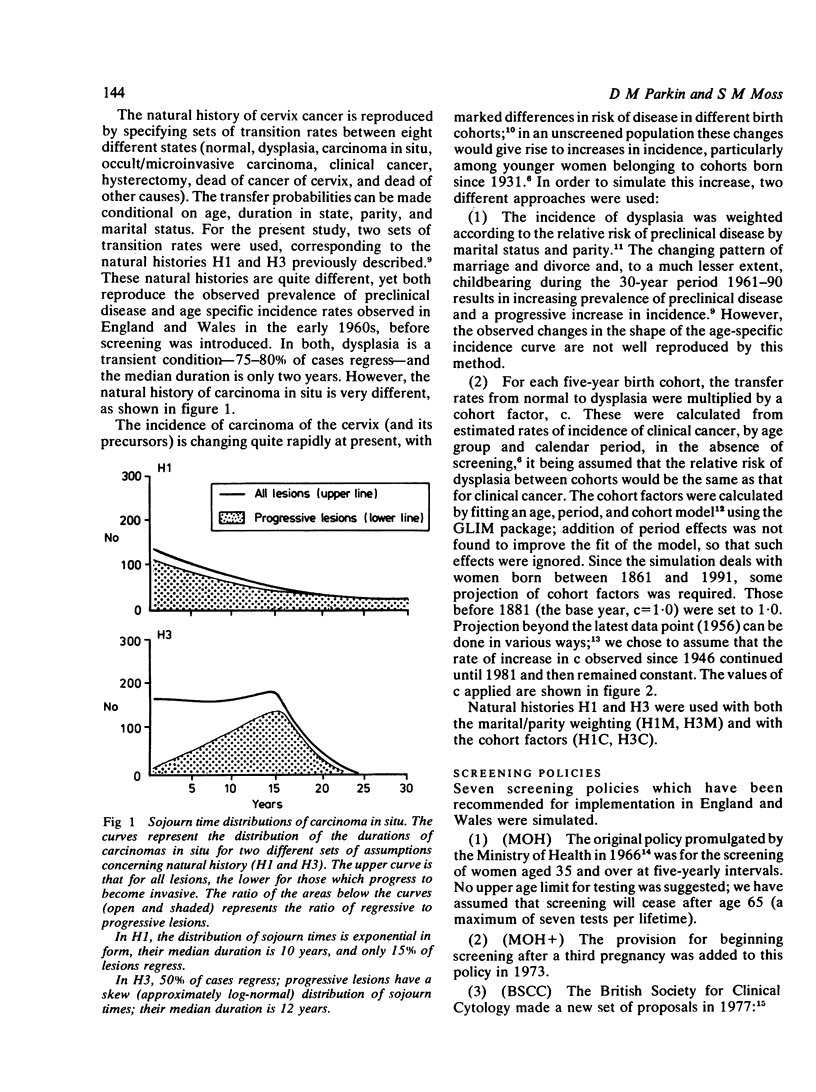
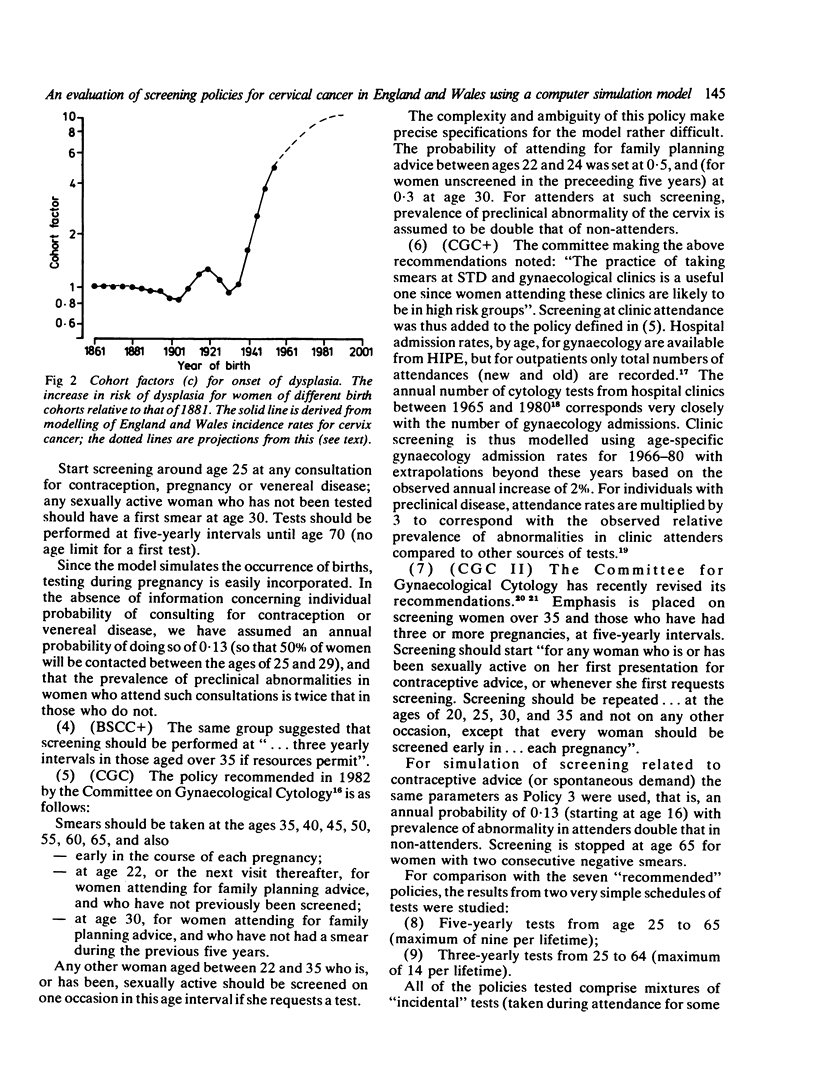
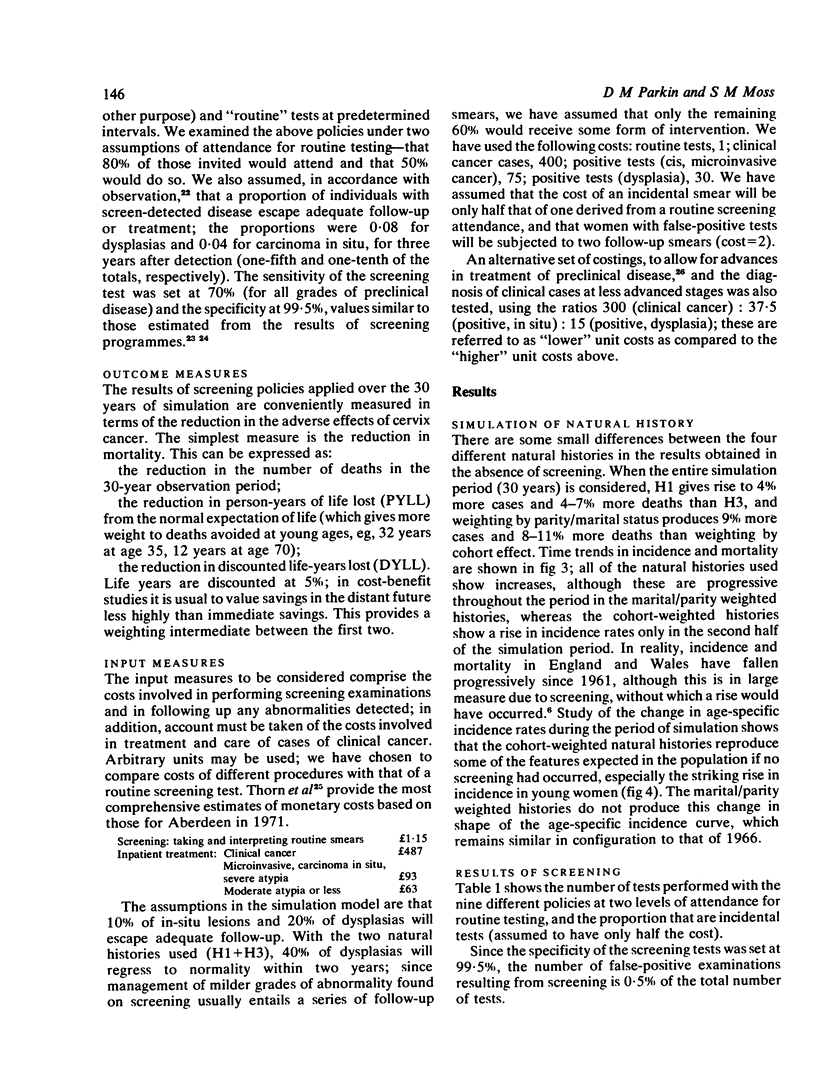
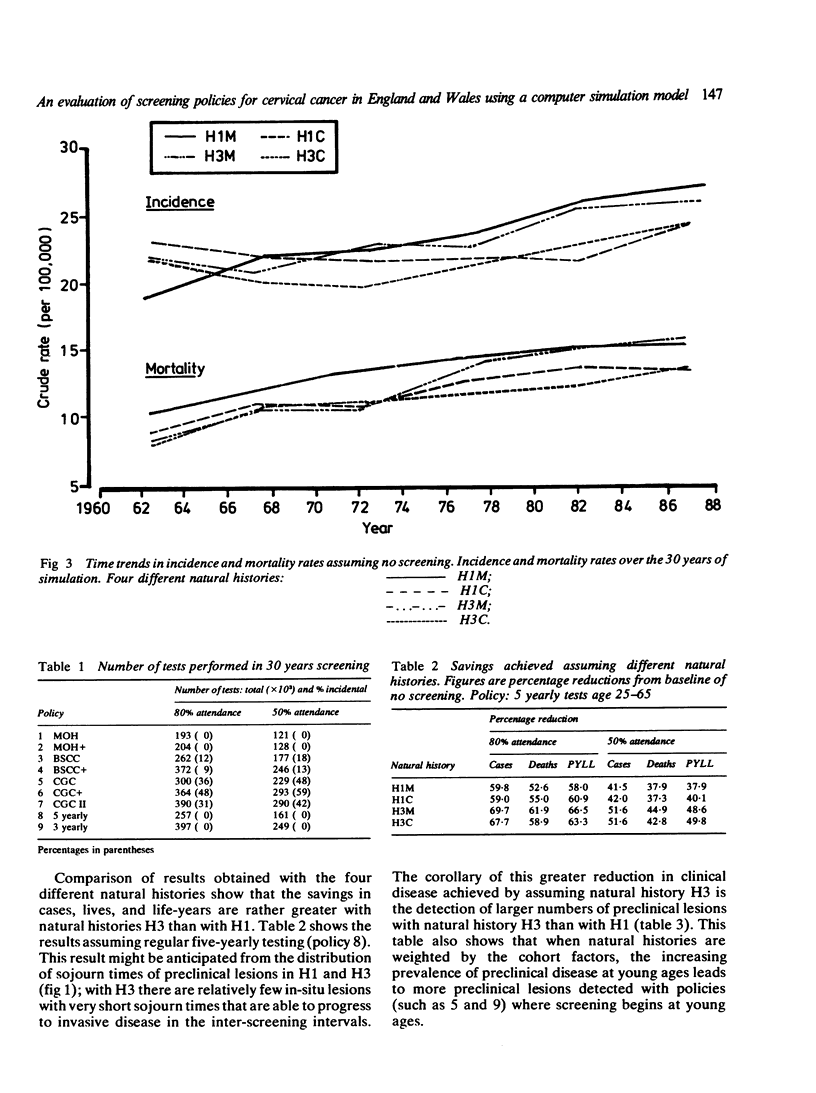
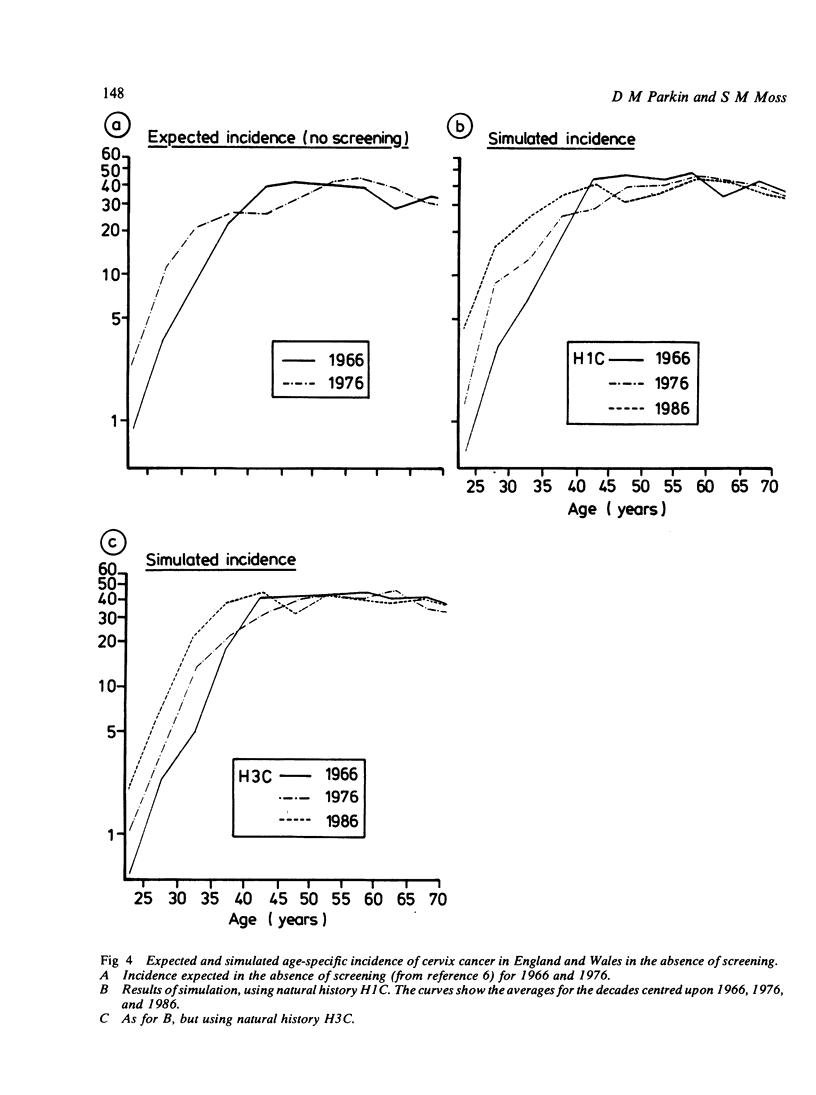
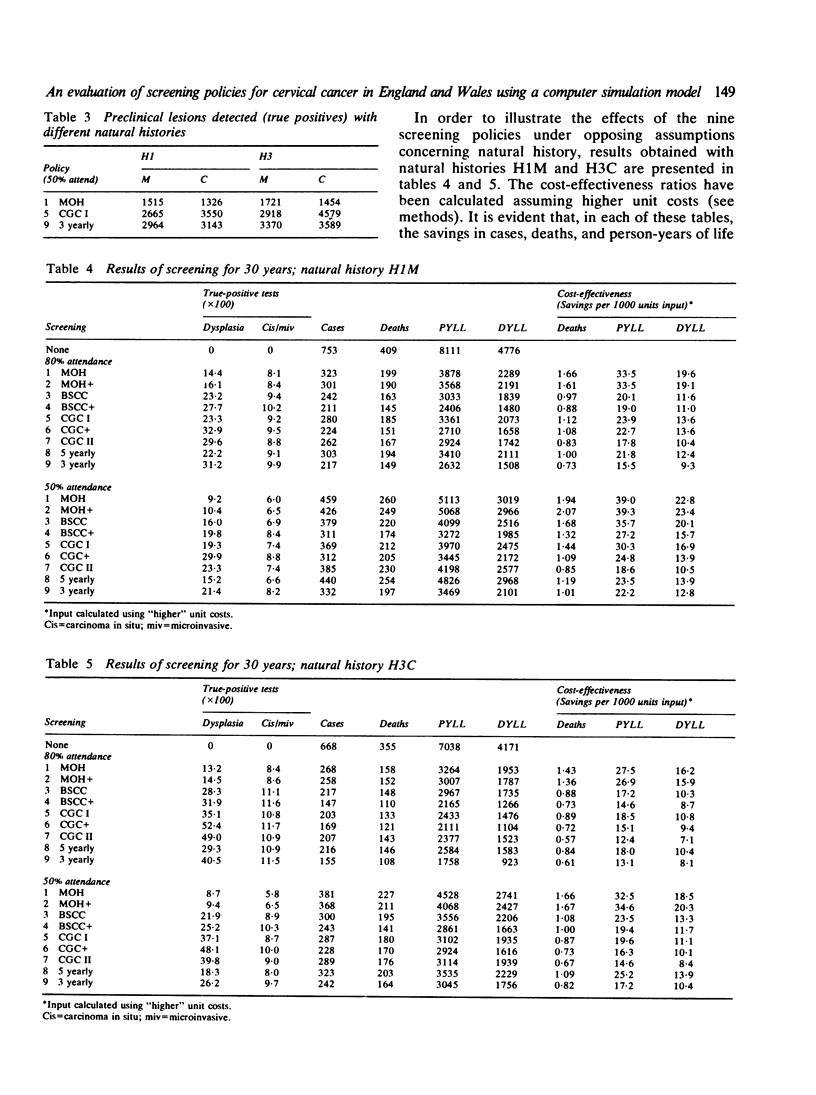
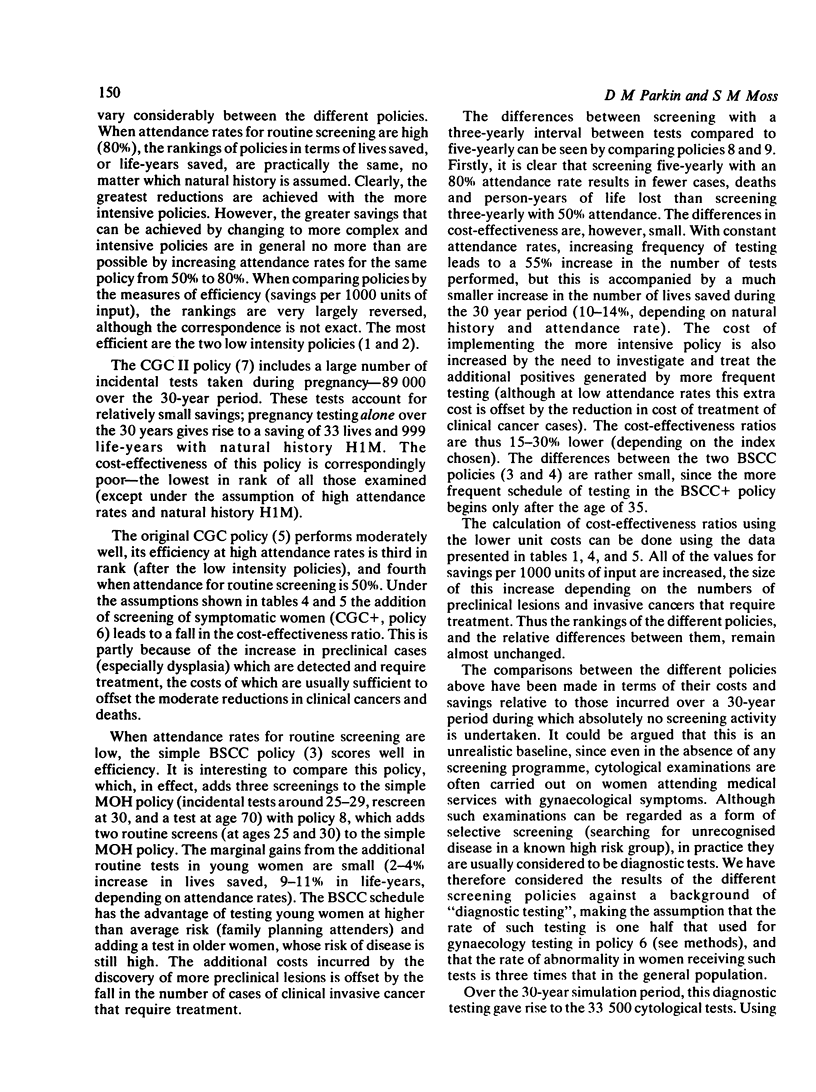
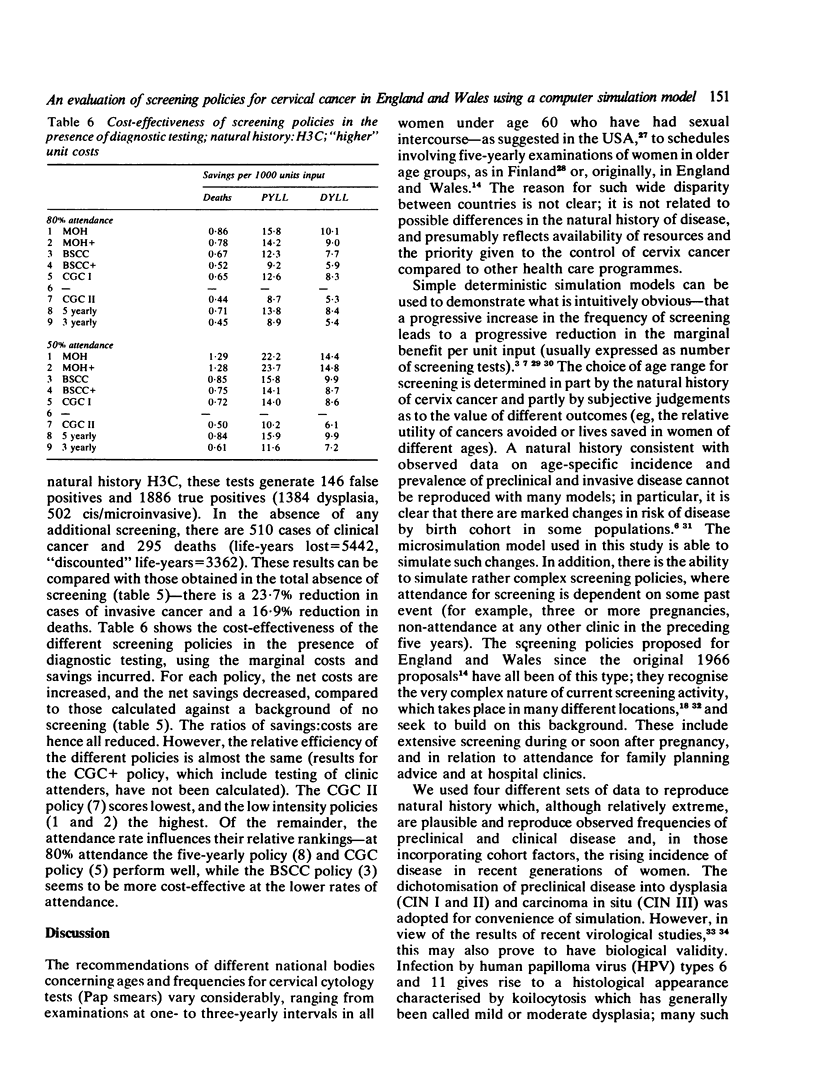
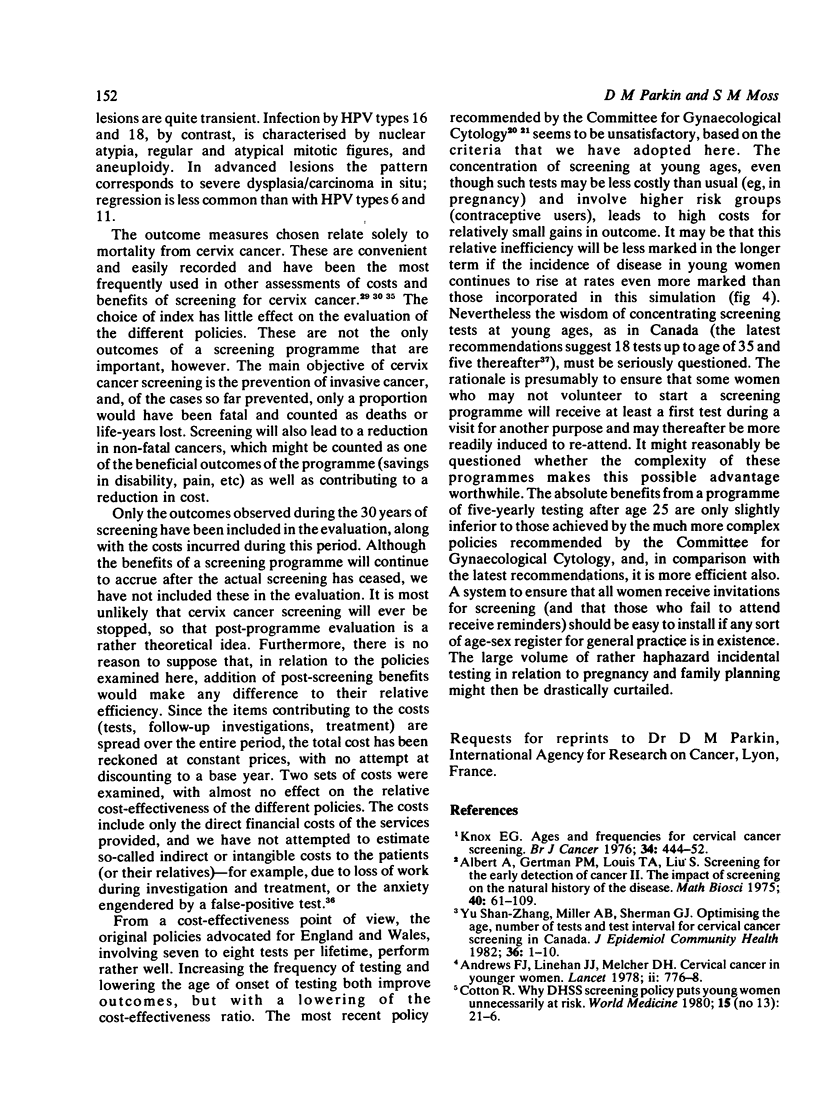
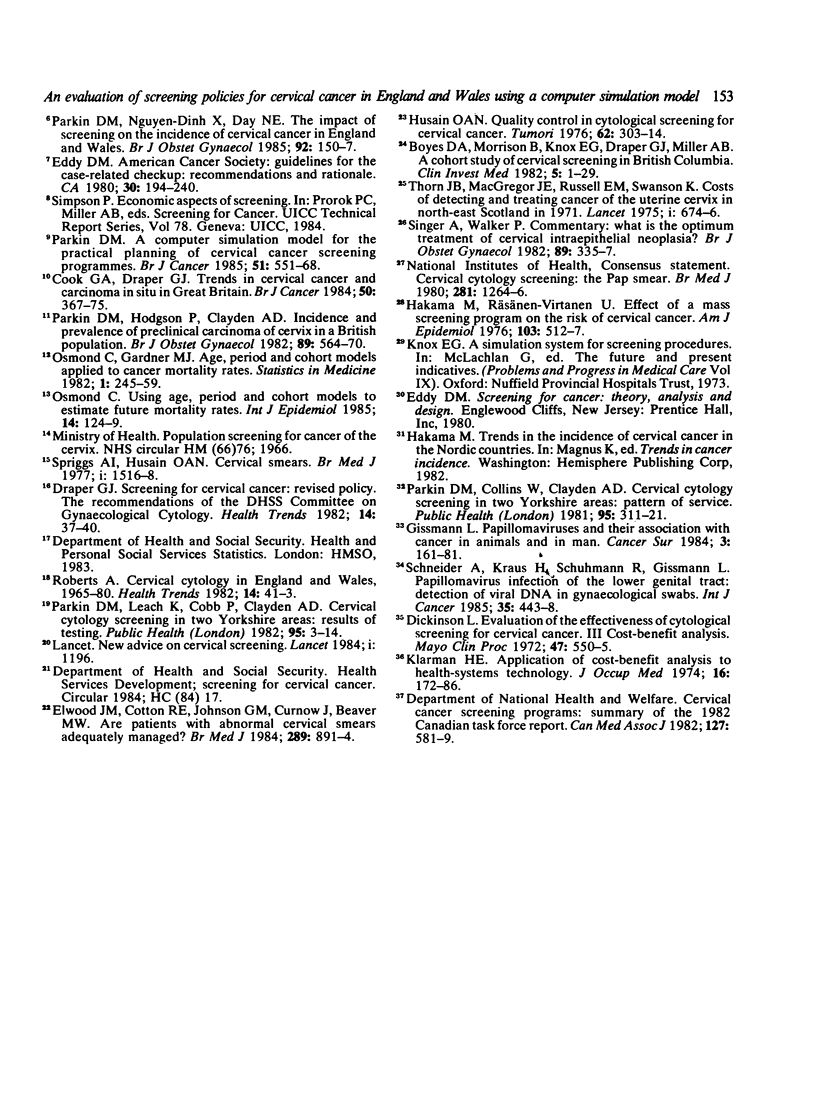
Selected References
These references are in PubMed. This may not be the complete list of references from this article.
- Andrews F. J., Linehan J. J., Melcher D. H. Cervical cancer in younger women. Lancet. 1978 Oct 7;2(8093):776–778. doi: 10.1016/s0140-6736(78)92659-4. [DOI] [PubMed] [Google Scholar]
- Boyes D. A., Morrison B., Knox E. G., Draper G. J., Miller A. B. A cohort study of cervical cancer screening in British Columbia. Clin Invest Med. 1982;5(1):1–29. [PubMed] [Google Scholar]
- Cook G. A., Draper G. J. Trends in cervical cancer and carcinoma in situ in Great Britain. Br J Cancer. 1984 Sep;50(3):367–375. doi: 10.1038/bjc.1984.185. [DOI] [PMC free article] [PubMed] [Google Scholar]
- Dickinson L. Evaluation of the effectiveness of cytologic screening for cervical cancer. 3. Cost-benefit analysis. Mayo Clin Proc. 1972 Aug;47(8):550–555. [PubMed] [Google Scholar]
- Draper G. J. Screening for cervical cancer: revised policy. The recommendations of the DHSS Committee on Gynaecological Cytology. Health Trends. 1982 May;14(2):37–40. [PubMed] [Google Scholar]
- Eddy D. ACS report on the cancer-related health checkup. CA Cancer J Clin. 1980 Jul-Aug;30(4):193–240. [PubMed] [Google Scholar]
- Elwood J. M., Cotton R. E., Johnson J., Jones G. M., Curnow J., Beaver M. W. Are patients with abnormal cervical smears adequately managed? Br Med J (Clin Res Ed) 1984 Oct 6;289(6449):891–894. doi: 10.1136/bmj.289.6449.891. [DOI] [PMC free article] [PubMed] [Google Scholar]
- Hakama M., Räsänen-Virtanen U. Effect of a mass screening program on the risk of cervical cancer. Am J Epidemiol. 1976 May;103(5):512–517. doi: 10.1093/oxfordjournals.aje.a112253. [DOI] [PubMed] [Google Scholar]
- Husain O. A. Quality control in cytological screening for cervical cancer. Tumori. 1976 May-Jun;62(3):303–314. doi: 10.1177/030089167606200308. [DOI] [PubMed] [Google Scholar]
- Klarman H. E. Application of cost-benefit analysis to health systems technology. J Occup Med. 1974 Mar;16(3):172–186. [PubMed] [Google Scholar]
- Knox E. G. Ages and frequencies for cervical cancer screening. Br J Cancer. 1976 Oct;34(4):444–452. doi: 10.1038/bjc.1976.190. [DOI] [PMC free article] [PubMed] [Google Scholar]
- Osmond C., Gardner M. J. Age, period and cohort models applied to cancer mortality rates. Stat Med. 1982 Jul-Sep;1(3):245–259. doi: 10.1002/sim.4780010306. [DOI] [PubMed] [Google Scholar]
- Osmond C. Using age, period and cohort models to estimate future mortality rates. Int J Epidemiol. 1985 Mar;14(1):124–129. doi: 10.1093/ije/14.1.124. [DOI] [PubMed] [Google Scholar]
- Parkin D. M. A computer simulation model for the practical planning of cervical cancer screening programmes. Br J Cancer. 1985 Apr;51(4):551–568. doi: 10.1038/bjc.1985.78. [DOI] [PMC free article] [PubMed] [Google Scholar]
- Parkin D. M., Hodgson P., Clayden A. D. Incidence and prevalence of preclinical carcinoma of cervix in a British population. Br J Obstet Gynaecol. 1982 Jul;89(7):564–570. doi: 10.1111/j.1471-0528.1982.tb03661.x. [DOI] [PubMed] [Google Scholar]
- Parkin D. M., Leach K., Cobb P., Clayden A. D. Cervical cytology screening in two Yorkshire areas: results of testing. Public Health. 1982 Jan;96(1):3–14. doi: 10.1016/s0033-3506(82)80023-1. [DOI] [PubMed] [Google Scholar]
- Parkin D. M., Nguyen-Dinh X., Day N. E. The impact of screening on the incidence of cervical cancer in England and Wales. Br J Obstet Gynaecol. 1985 Feb;92(2):150–157. doi: 10.1111/j.1471-0528.1985.tb01067.x. [DOI] [PubMed] [Google Scholar]
- Schneider A., Kraus H., Schuhmann R., Gissmann L. Papillomavirus infection of the lower genital tract: detection of viral DNA in gynecological swabs. Int J Cancer. 1985 Apr 15;35(4):443–448. doi: 10.1002/ijc.2910350405. [DOI] [PubMed] [Google Scholar]
- Shun-Zhang Y., Miller A. B., Sherman G. J. Optimising the age, number of tests, and test interval for cervical screening in Canada. J Epidemiol Community Health. 1982 Mar;36(1):1–10. doi: 10.1136/jech.36.1.1. [DOI] [PMC free article] [PubMed] [Google Scholar]
- Singer A., Walker P. What is the optimum treatment of cervical premalignancy? Br J Obstet Gynaecol. 1982 May;89(5):335–337. doi: 10.1111/j.1471-0528.1982.tb05073.x. [DOI] [PubMed] [Google Scholar]
- Thorn J. B., Russell E. M., Macgregor J. E., Swanson K. Costs of detecting and treating cancer of the uterine cervix in North-East Scotland in 1971. Lancet. 1975 Mar 22;1(7908):674–676. doi: 10.1016/s0140-6736(75)91771-7. [DOI] [PubMed] [Google Scholar]


